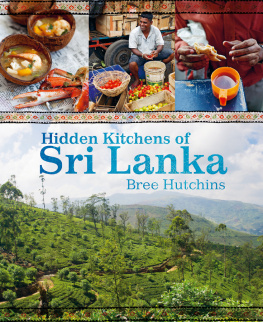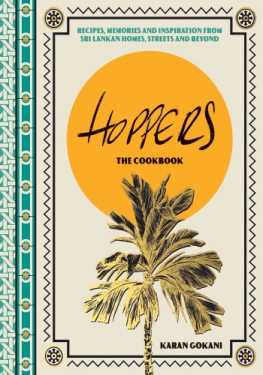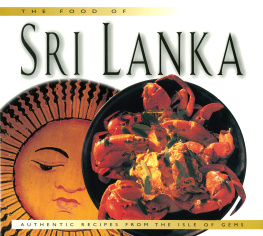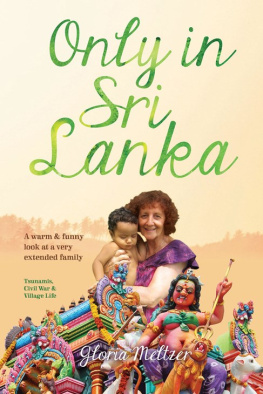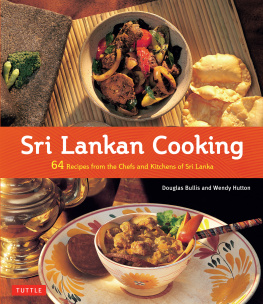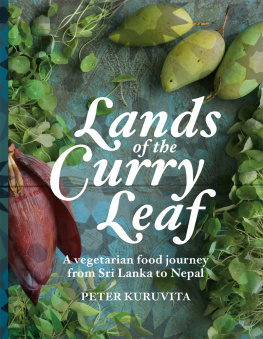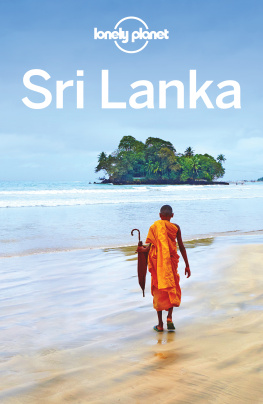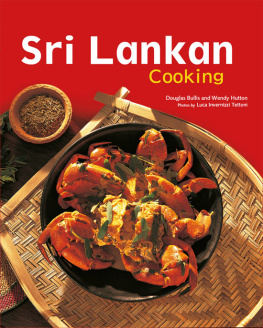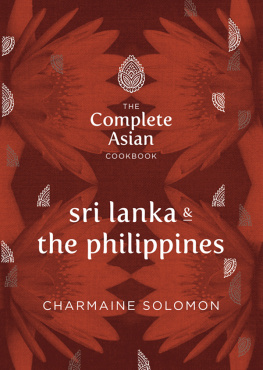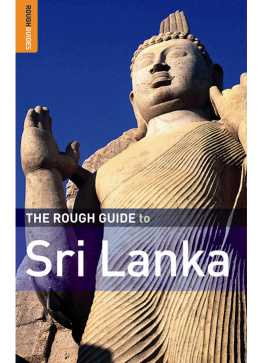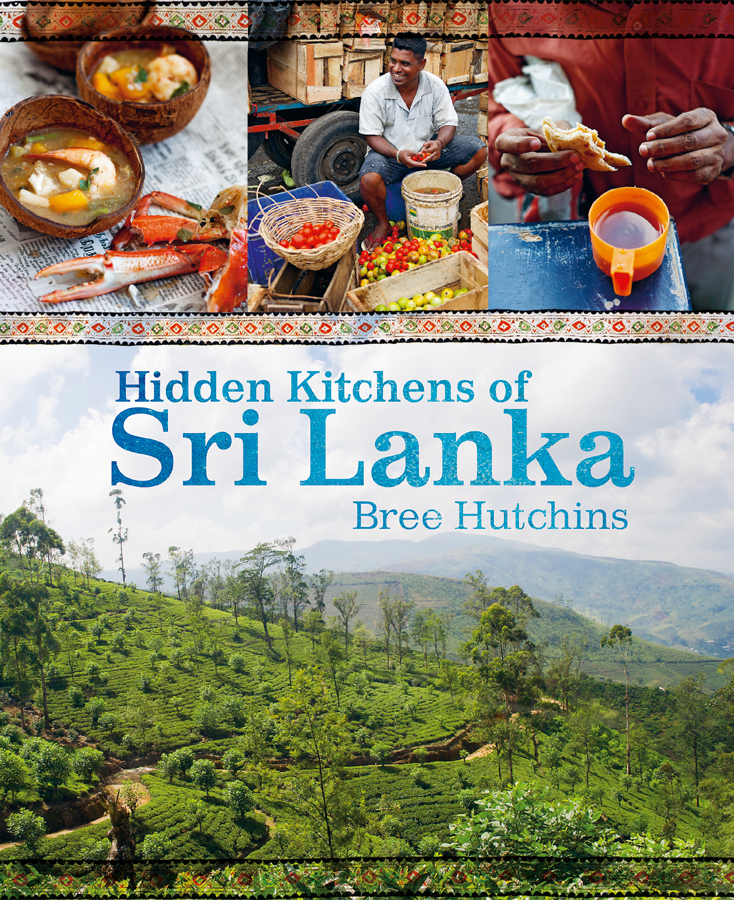Within seconds she bringsover a plate of piping-hot vadai.I eagerly take one and bite intoit; the crunchy exterior givesway to a soft and steamy blendof dhal, fennel seeds, curryleaves and chilli. Eaten witha cup of steaming milky teathey quickly become addictive.Realising I cant leave withoutthe recipe, I start hoveringaround where the food isbeing prepared.
CONTENTS
THE JOURNEY
BEGINS
I am heading down a narrow sandy path in Valvettithurai on the Jaffna Peninsula. Its late January 2012, the sun is blistering hot and not a breath of wind is coming off the Indian Ocean. The colourful wooden fishing boats and sunburnt palmyra palms are completely still. My companions another photographer and a film crew struggle in the heat, but our Sri Lankan guide doesnt seem to notice the sweat that streams down his back.
Ive been in Sri Lanka for a month, documenting the work of the MJF Charitable Foundation, which was established in 1962 by Merrill J Fernando, the founder of Dilmah. In two weeks Im due to fly home to Sydney, but Im not ready to leave. Its not just that this tiny tropical island is stunningly beautiful and barely touched by tourism, its also the people I have met; I am captivated by them. They have endured so much through three decades of civil war and the devastating 2004 tsunami, yet they possess a resilience, determination and positivity that I find awe inspiring. They dont just welcome strangers with a smile, they invite them into their homes to share a meal or a cup of tea with their families. Their hospitality is genuine and heartfelt. And they are incredible cooks.
As we stop to take a few photographs, I turn to our guide, who is also the marketing manager of Dilmah, and surprise myself when I blurt out, Wouldnt it be incredible to travel around the country and stay with local families, to hear their stories and learn their family recipes? Im even more surprised when he replies, Why dont you? You could write a book and take the photographs. Dilmah could sponsor the publication. And, as serendipitously as that, I land my first book deal on a sandy pathway on the Jaffna Peninsula.
With my heart still in Sri Lanka, I fly back briefly to Sydney to map out a plan for the book and find an editor and designer. I recognise that the journey on which Im about to embark will be challenging and stretch me to my limits, but I also know it will be incredibly rewarding.
.......................... * ..........................
I returned to Sri Lanka in time for Sinhalese and Tamil New Year. Over the next few months I explored the hidden kitchens of Colombo, ventured deep into the remote rural villages of the East, cooked with the inmates of Monaragala Prison and stayed at an army camp in Vakarai. I travelled north to the Jaffna Peninsula, my favourite place in Sri Lanka, where I was caught up in a flurry of saris and chariots at a Hindu temple festival, and was spoilt rotten by two war widows.
My enthusiasm to photograph everything created much entertainment for the locals. When I wasnt wandering into peoples kitchens, lured by spicy aromas, I was clambering up ladders and over fences, wading fully clothed into water or perching on stacks of rickety crates in busy market places all for the perfect shot.
While my travels took me all around Sri Lanka, I spent most of my time in the East and the North, which until recently has been inaccessible because of civil war. With the help of Dilmah and the MJF Charitable Foundation, I was able to visit places not many foreigners have been allowed to enter. While tensions still exist in some areas, I never felt unsafe. Many towns are scarred by the war and the tsunami and there are a multitude of aid agencies working hard to repair the devastation. I was able to see first-hand the impact that assistance from charities such as the MJF Foundation has on peoples lives. While the Fernando family is very humble about the work of the Foundation, from what I saw it is playing a vital role in the countrys recovery.
This book is a collection of stories and recipes given to me by the people I connected with on my travels, many of whom I met by chance in market places or at roadside stalls. It didnt matter whether they were Buddhist or Hindu, Muslim or Christian, rich or poor, I was accepted without question and they openly shared their recipes, homes and histories with me. Listening to their stories would sometimes be heartbreaking and haunting, but they were always inspiring and full of promise.
Food plays a pivotal role in Sri Lankan culture and is used to celebrate festivals, religious ceremonies and every major event in a persons life. Sri Lankans are incredibly proud of their cuisine and cook from recipes handed down orally from one generation to the next. They dont measure ingredients, instead adding a handful of this and a pinch of that, according to intuition and taste. This made it rather challenging to estimate the quantities as I scribbled down recipes, however I was very fortunate to have my Sri Lankan friend Neyome with me. Neyome speaks Sinhala and Tamil and endeavoured to translate the cooking methods and explain some of the unusual ingredients. Each recipe is one persons version of a dish and I have tried not to alter it, except where the ingredients may be unobtainable or the traditional cooking methods too laborious.
Back home in Sydney I love cooking these recipes. And each time I do, I am transported back to a dimly lit kitchen in a mud hut, or a roadside stall, or to a home hidden away in a rural village, and reminded of tales told while we prepared fragrant curries, spicy fried snacks and rich sweets together. I hope you will also enjoy cooking these recipes and reading the stories of those who shared a small part of their lives with me.
Sri Lankas capital and ethnic melting pot, Colombo is a jumble of Buddhistand Hindu temples, mosques and churches. The city is changing fast, butis skilfully maintaining its sense of identity. Old Colonial buildings andsprawling markets sit amid towering skyscrapers, gleaming shopping malls,pumping nightclubs and trendy bars. Colombo is alive with a sense that itsthe place to be.
Taking a tuk-tuk and exploring the neighbourhoods less frequented bytourists gives an insight into how the city ticks. Colombo offers some of thecountrys most culturally diverse food. To sample some, head down to GalleFace Green, the best place for Sri Lankan street food.

